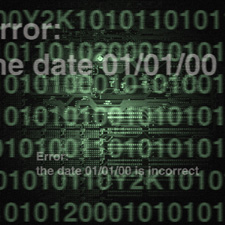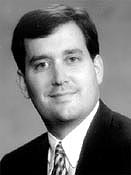Y2K
Resources
The
Great Computer Crash of 2000
Year 2000 Insurance Coverage Issues
By Douglas P. Dehler
As businesses work to fix the Year 2000 problem,1 more attention has focused on the potential for
insurance coverage. Because it is difficult to know what losses may
result from what some predict may be an unprecedented, global computer
failure, it is also difficult to anticipate all of the insurance
coverage issues that will arise. It is safe to say, however, that many
types of insurance policies will be involved. This article addresses
some of the coverage issues that may arise, and considers what steps
insurance companies and policyholders may take to deal with those
issues.
| The coming months will set the
state for much of the coverage litigation over year 2000 losses, as
insurance companies seek to add new exclusions when insurance policies
are renewed. |
Year 2000 claims almost certainly will be made on first party
property policies, which often include business interruption coverage.
These policies cover damage to the policyholder's own "covered
property." When they include business interruption coverage, these
policies also cover lost profits sustained while the policyholder's
business operations are shut down because of the damage to covered
property. In many policies, "covered property" is defined to include,
among other things, "personal property owned by you and used in your
business."2 Often, these policies
specifically exclude coverage for "the cost to research, replace, or
restore the information on valuable papers and records, including those
which exist on electronic or magnetic media," unless such coverage is
added by endorsement.3
 Whether there is damage to "covered property"
will depend upon the unique facts of each claim. For example, if only
computer data is damaged, there may be questions about whether the data
is "personal property." Similarly, if coverage is sought only for the
cost of restoring or replacing computer data, there may be questions
about whether the data relates to "valuable papers and records."
Whether there is damage to "covered property"
will depend upon the unique facts of each claim. For example, if only
computer data is damaged, there may be questions about whether the data
is "personal property." Similarly, if coverage is sought only for the
cost of restoring or replacing computer data, there may be questions
about whether the data relates to "valuable papers and records."
In addition to computer data, a Year 2000 problem may damage computer
software and hardware, a computer network, manufacturing equipment,
inventory, and products. Even if the cost of restoring lost computer
data is not covered, there may be coverage for other property damage
caused by a computer malfunction. Determining where damage to data ends
and where damage to computer software or hardware begins may be a
difficult question requiring expert testimony.
In addition, first party property policies generally require that
damage to covered property be caused by a "covered peril" or "covered
cause of loss." Many policies define "covered cause of loss" broadly to
include all "risks of direct physical loss," unless specifically
excluded or limited.4 Under these policies,
unless excluded, computer malfunctions probably are included as a "risk
of direct physical loss." Other policies may more narrowly define
"covered cause of loss" to include only specified perils.
Some Year 2000 claims also may implicate general liability policies.
Unlike first party property policies, which cover the policyholder's own
property, third party liability policies protect the policyholder from
liability for damage caused to others. In some cases, a Year 2000
problem may harm not only the policyholder's own computer equipment but
also damage a third party's property or even cause bodily injury. For
example, if a computer chip failure causes a medical device to
malfunction on Jan. 1, 2000, resulting in bodily harm to a patient, a
claim might be brought against the medical device's manufacturer.
Because most liability policies do not exclude coverage for bodily
injuries caused by computer failures, coverage may be available under
the manufacturer's general liability policy, subject to any exclusions
or limitations for products liability claims.
Claims also might arise under directors and officers (D&O)
liability policies. In the example above, if the medical device
manufacturer's shareholders allege that corporate directors failed to
take proper Year 2000 remedial measures, coverage likely would be
available for the claim under the corporation's D&O policy.
Similarly, claims on professional liability policies may flow from Year
2000 problems. If the patient in the example above alleges that the
medical provider failed to take proper steps when responding to the
computer failure, a claim likely will be made under the provider's
professional liability policy.
Most insurance policies do not exclude coverage for Year 2000-type
problems. But this may change soon. The insurance industry has drafted
new policy exclusions aimed at reducing or eliminating coverage for Year
2000 losses. These exclusions are being submitted now to state insurance
regulators for approval.5 In the coming
months, many insurance companies will propose adding these new
exclusions to insurance policies as they come up for renewal. To the
extent possible, policyholders may attempt to resist an insurance
company's efforts to add new Year 2000 exclusions. Whether these efforts
are successful will depend upon whether the policyholder has any
significant bargaining power and the level of competition in the
insurance market.
In addition to the new exclusions, the insurance industry has hinted
at another strategy for limiting its exposure for Year 2000 claims. Some
insurance companies may take the position that these claims are not
covered under any insurance policy (regardless of the type of coverage
it affords) based upon principles of fortuity and under the known loss
doctrine.6 The theory is that Year 2000
losses are known and foreseeable, and therefore are not the type of
fortuitous losses intended to be covered by insurance policies.
In response to these types of arguments, policyholders probably will
argue that the denial of coverage on such grounds cannot be supported by
the language of the policies themselves. With the exception of
"claims-made" policies, most insurance policies do not contain "known
loss" exclusions. Even where such exclusions exist, it may be difficult
to show that a policyholder predicted or knew about any particular Year
2000 loss at the time it purchased insurance coverage. Furthermore, what
a policyholder knew (or didn't know) about Year 2000 problems when it
purchased an insurance policy is likely to be a fact-intensive
question.
 |
Douglas P. Dehler, U.W. 1991, is a partner
at Michael Best & Friedrich LLP, Milwaukee, where he practices
litigation and represents clients in insurance coverage disputes. |
Late notice also may be an issue. Most insurance policies require
notice once a policyholder knows that a loss or accident has occurred.
If a policyholder fails to notify its insurer promptly after it
experiences a Year 2000 loss, it may later be precluded from obtaining
coverage for that loss, particularly if the insurance company is
prejudiced by the late notice. Although much of the attention has
focused on what will happen at midnight on Jan. 1, 2000, in some cases
Year 2000 losses may take place earlier. For example, in a Michigan case
filed in 1997, a retailer alleged that its cash register system already
had begun malfunctioning because it would not accept credit cards with
expiration dates after the Year 2000.7 A
policyholder should notify its insurer as soon as it learns of a
computer malfunction, even if the extent of the damage is not fully
known or the loss has not yet resulted in a third party claim or
lawsuit.
While the magnitude of the Year 2000 problem is debatable, some
amount of litigation is certain. As with most other litigation,
insurance policies will play an important role. The coming months will
set the stage for much of the coverage litigation over Year 2000 losses,
as insurance companies seek to add new exclusions as insurance policies
are renewed. Only time will tell whether this strategy for limiting the
insurance industry's liability for Year 2000 losses has been
successful.
Endnotes
1 Additional background on this
subject is available in Craig Fieschko's article, "The
Great Computer Crash of 2000," in the May 1998 Wisconsin
Lawyer.
2 See, Insurance Services
Office Inc.'s Building and Personal Property Coverage Form, CP 00 10 06
95 (1994). (This insurance form is available from Insurance
Services Office, 7 World Trade Center FL 17, New York, NY 10048.)
3 Id.
4 See, Insurance Services
Office Inc.'s Causes of Loss Special Form, CP 10 30 06 95 (1994).
(This insurance form is available from Insurance Services Office, 7
World Trade Center FL 17, New York, NY 10048.)
5 ISO Circulating Exclusions
for Y2K Liabilities, Mealey's Year 2000 Report (February 1998).
6 Anne Colden, "Insurers Differ
Over Paying Y2K Claims," Journal of Commerce, May 22, 1998, at
5A.
7 Produce Palace Int'l v.
TEC-America Corp. and All American Cash Register Inc., No.
97-3330-CK, Macomb County Circuit Court, Mich., filed June 12, 1997.
Wisconsin Lawyer
